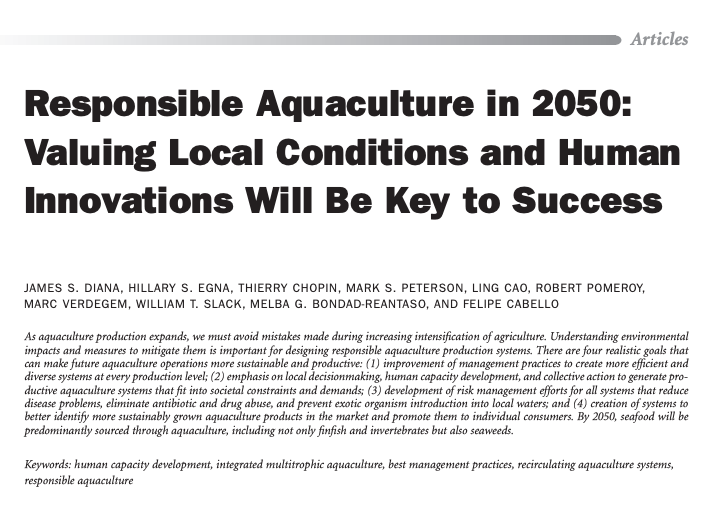Responsible Aquaculture in 2050: Valuing Local Conditions and Human Innovations Will Be Key to Success

As aquaculture production expands, we must avoid mistakes made during increasing intensification of agriculture. Understanding environmental impacts and measures to mitigate them is important for designing responsible aquaculture production systems. There are four realistic goals that can make future aquaculture operations more sustainable and productive: (1) improvement of management practices to create more efficient and diverse systems at every production level; (2)emphasis on local decisionmaking, human capacity development, and collective action to generate productive aquaculture systems that fit into societal constraints and demands; (3) development of risk management efforts for all systems that reduce disease problems, eliminate antibiotic and drug abuse, and prevent exotic organism introduction into local waters; and (4) creation of systems to better identify more sustainably grown aquaculture products in the market and promote them to individual consumers. By 2050, seafood will be predominantly sourced through aquaculture, including not only finfish and invertebrates but also seaweeds.